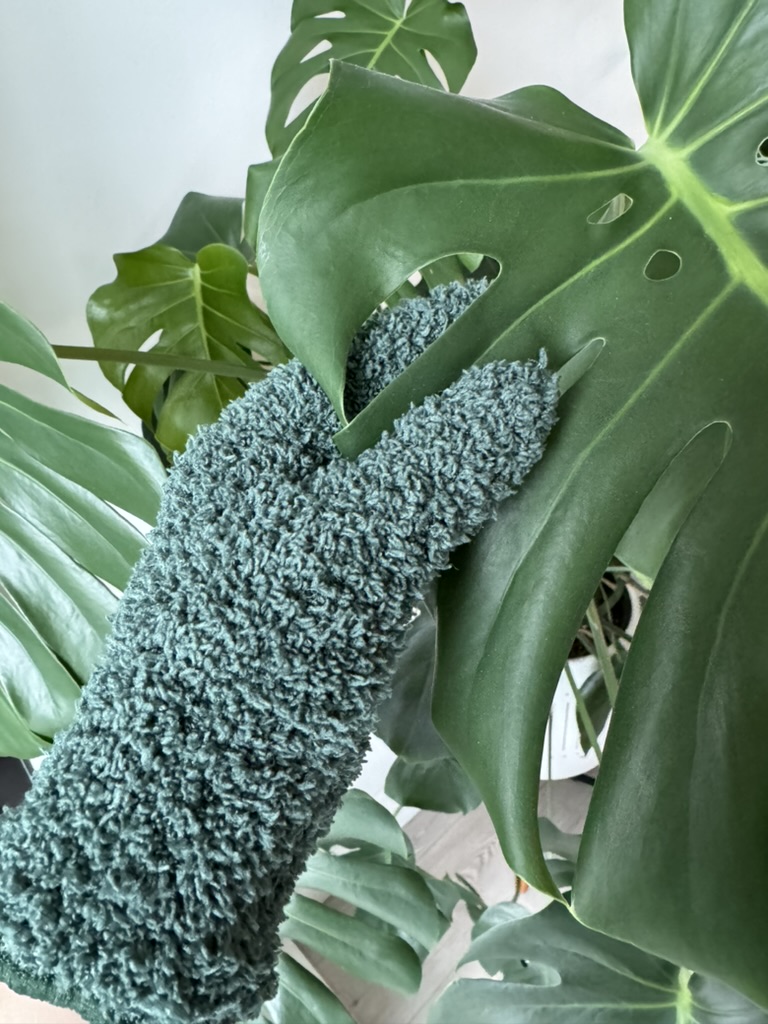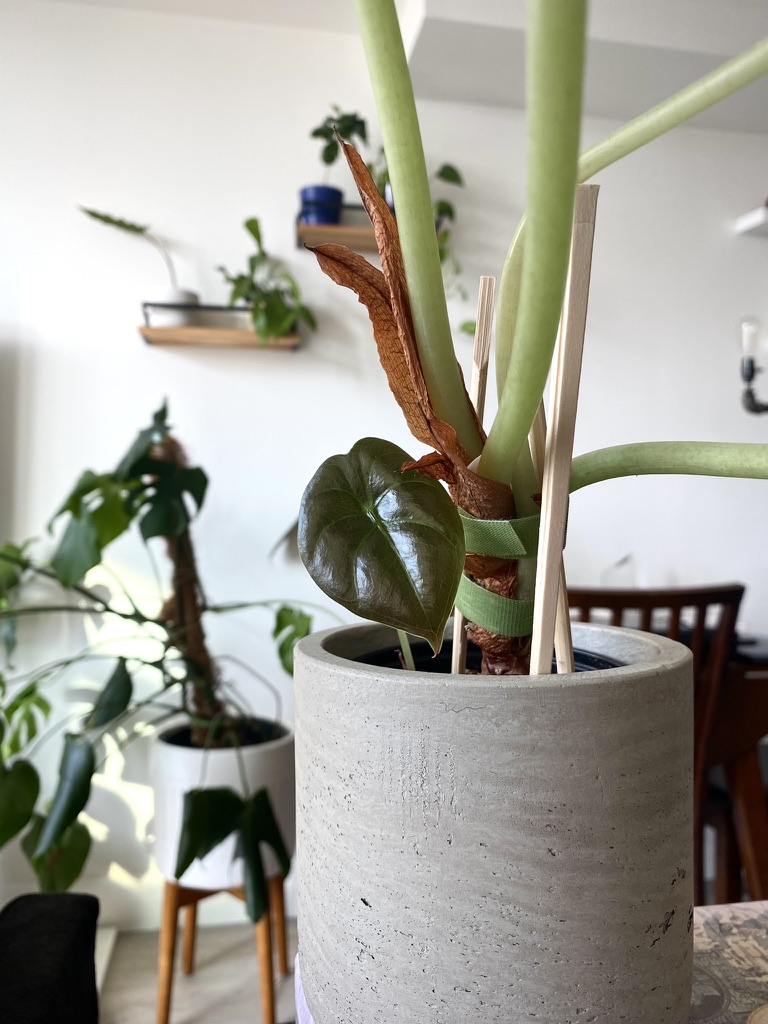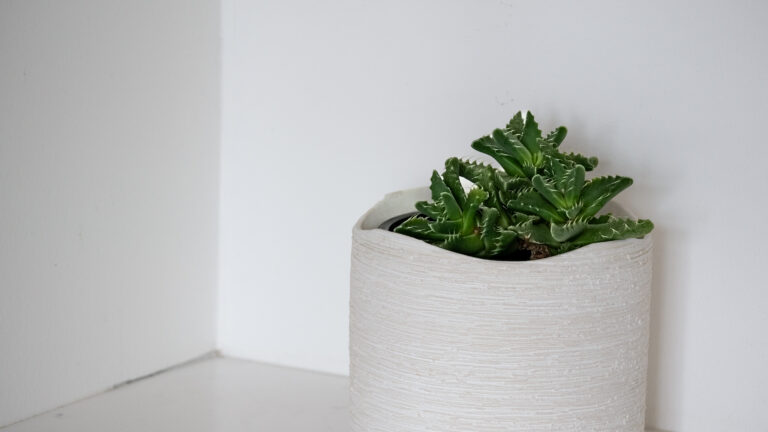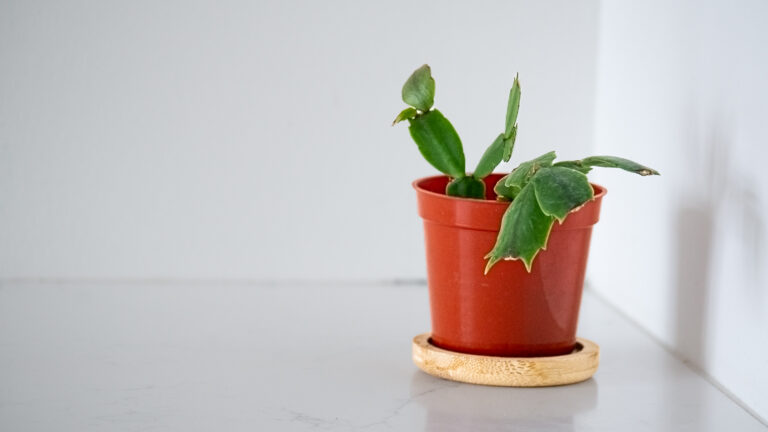Fiddle Leaf Fig or Ficus Lyrata is a member of the Moraceae (fig) family. It is native to Western Africa.
Ficus Lyrata is referred to as the Fiddle Leaf Fig because its leaves resemble the size and shape of fiddles, and it can produce figs.
Caring for this plant is a balance between slight neglect and care. This plant doesn’t like to be moved too often, or watered too much. It likes bright sun, but not too bright. It’s basically the Goldilocks of plants.
There are around 1100 species of the moraceae family.
🪴 Appearance of Fiddle Leaf Fig
Fiddle Leaf Fig is a tropical tree, that can grow in many different forms (tree, column, bonsai). Mine grows more in a column form, which is perfect for me as I live in a condo.
The leaves of the Fiddle Leaf are consistent across the different forms it grows in. They resemble a fiddle in both shape and size, and are a deep green colour. The leaves branch off of the stem and new leaves grow out of the top.
☀️ What Light Does Fiddle Leaf Fig Cactus Need?
Fiddle Leaf Fig thrives in bright, indirect, medium-bright light. They prefer morning sun with indirect light for the rest of the day.
I had my Fiddle Leaf in my south-west window and it was not happy. When I moved it to my north-east window, it was much happier.
🌡️ What Temperature and Humidity do Fiddle Leaf Fig Like? 🌫️
Fiddle Leaf Fig prefers a temperature between 18-30 degrees celsius. It is sensitive to drafts and sudden temperature changes so make sure the environment remains consistent otherwise your Fiddle Leaf might start dropping leaves.
They do well in average household humidity levels (40%-60%), but would prefer higher humidity. Since they come from the tropical lowland regions of Western Africa, they prefer moist air.
I keep my Fiddle Leaf Fig close to my window and humidifier.
I use my humidifier to ensure the humidity levels in my apartment stays between 40% and 60%. Since I live in Canada and the winters can be very dry, and the humidity can drop below 30% humidity, so its helpful to set the humidity at about 45% or 50% in this season to keep all of my plants healthy.
🌱 How Does the Fiddle Leaf Fig Grow?
On average, Fiddle Leaf Fig can grow up to 6 feet indoors and up to 10 feet outdoors.
New foliage grows out of the top of the column. They appear as small tightly wrapped, bright green leaves. As the leaves mature they grow bigger, unfurl and are darker green in colour.
🌸 Does the Fiddle Leaf Fig Bloom?
Indoors the Fiddle Leaf Fig rarely flowers. In the wild the plant will flower and produce fruit.

✂️ How to Propagate Fiddle Leaf Fig?
The easiest way to start a new Fiddle Leaf Fig is by branch cuttings.
- Branch Cuttings: Choose a leaf from a healthy adult plant. Make sure the branch has about three to four nodes along the stem and make the cut using clean shears. You then have a choice of either water propagation (my favourite) or soil propagation.
- Water propagation: Remove the bottom leaves before placing the stem in room-temperature water. The nodes should be submerged, but the leaves should be above the surface. Put the cutting in a well lit area (I would put it where my main plant is since you know it likes the light there). If the water starts to get murky, you will want to change out the water and put the plant back in clean water. If you don’t change the water regularly, it will potentially rot the stem and the plant won’t root. I like water propagation because I can see when the roots start to form in a clear glass container. Roots should form within three weeks. When the roots are stable enough, I then plant it in soil. The soil should be kept evenly moist for the first couple weeks (not soggy—you don’t want root rot).
- Soil propagation: With soil propagation, you can take a cutting and put it directly in soil. You can also use rooting hormone on the cutting before putting it in the soil if you prefer. I don’t do this though. You won’t be able to see if the plant is rooting in the soil, but if the plant eventually dies, you know it didn’t root successfully. With soil propagation, you don’t have to worry about transplant shock though.
Patience is key with propagation. Give your new plant time to settle into its environment. Once you see new growth, you know your plant is well established.
💧 How Much Water Does the Fiddle Leaf Fig Need?
The Fiddle Leaf Fig likes to mostly dry out between waterings. This plant typically needs to be watered every 2 weeks (depending on your environment).
To determine if your plant needs water, you can stick your finger in the soil (1 to 2 inches) and if it is dry, its ready for water! If you don’t want to get your hands dirty, you can try a moisture meter (I personally have not used one, but I know quite a few people who do, and this one is really highly rated on Amazon).
I typically bottom water this plant through the drainage hole of the pot on a tray. It’s the easiest way to know if your plant is thirsty or not. Overwatering can lead to fungus gnats, root rot, or the death of your plant.
You can top water, but it’s best to do so in a pot with drainage until water is flowing out of the hole. If your pot doesn’t have drainage, you might accidentally drown your plant or make some fungus gnats very happy.
You should top water from time to time to make sure any built up minerals can wash through the plant. The water should drip out of the bottom of your drainage hole.
🪳 Pests & Problems 😔
Some people really struggle with the Fiddle Leaf Fig. It can face the following pests and problems.
🪳 Pests
Mealy Bugs
These look like little white cotton balls on the plant. You can remove these with your fingers if you catch them early enough, but I would use a cotton swab with a drop of Isopropyl alcohol and try to scrape them off the stem.
Spider Mites
If spider mites have taken to your plant, spray them with a mixture of neem oil, dish soap and water (or you can buy an insecticidal soap). I repeat this about once or twice a week (depending on the severity of infestation) for about a month. It’s also good to do this preventatively once a month or so. You will know you have spider mites if you see webbing and leaf damage. Learn how to eradicate Spider Mites.
Fungus gnats
If you have fungus gnats, you can spray the plant with a mixture of neem oil, dish soap and water. I also let the soil dry out and add dryer sheets on top of the soil so the gnats can’t sense the moisture on the soil.
Thrips
Thrips are little, dark bugs that look like dirt. They suck the life out of the leaves, and lay eggs within the tissue of the leaf. As they age, they can grow wings and infect other plants. I spray the plant with a mixture of neem oil, dish soap and water. I repeat this every few days to try and get both the pest and the eggs. Sometimes I just chop the affected leaf since they are hard to eradicate. Complete guide on how to get rid of thrips.
Scale
I’ve never personally had to deal with scale (knock on wood) and I am very thankful. Scale are small, brownish, round or oval insects that attach themselves to the leaves or stems of the plant. They are hard to notice as they appear like a growth or bump on the plant. Scale can cause yellowing, wilting, and weakened growth. Removing scale from a plant is tedious, like with mealybugs. You can remove scale by manually removing them with a cotton swab with rubbing alcohol, using insecticidal soap or neem oil.
😔 Other Common Problems
Leaf Drop
This is likely from a change in environment. If you just got your Fiddle Leaf Fig or recently moved it, it may drop its leaves. Fiddle Leafs prefer a consistent environment. This should stop when its adapted to its new environment. If this continues, check for signs of overwatering, underwatering, improper lighting, pest, or temperature issues.
Brown, Crispy Leaves
This is likely just from age of the leaves, but if you recently changed its environment, then your plant may not like the change.
Brown, Curling Edges
This is likely from low humidity. You can solve this by using a humidifier. If this doesn’t solve your issue, this could be from underwatering.
Underwatering
Even though plants prefer to be underwatered over overwatered, you still have to remember to water it on a consistent schedule. Signs of underwatering can include leaves becoming shrivelled, discoloured or dry.
Overwatering
If you have dark brown spots on the leaves, this is likely a sign of root rot. Root rot happens from overwatering your plant with insufficient drainage. You can improve the drainage of your plant by ensuring your plant is potted in a planter with a drainage hole and using a well draining soil (something with a decent amount of perlite). You can also end up with fungus gnats or fungal disease from overwatering.
Discoloured Leaves
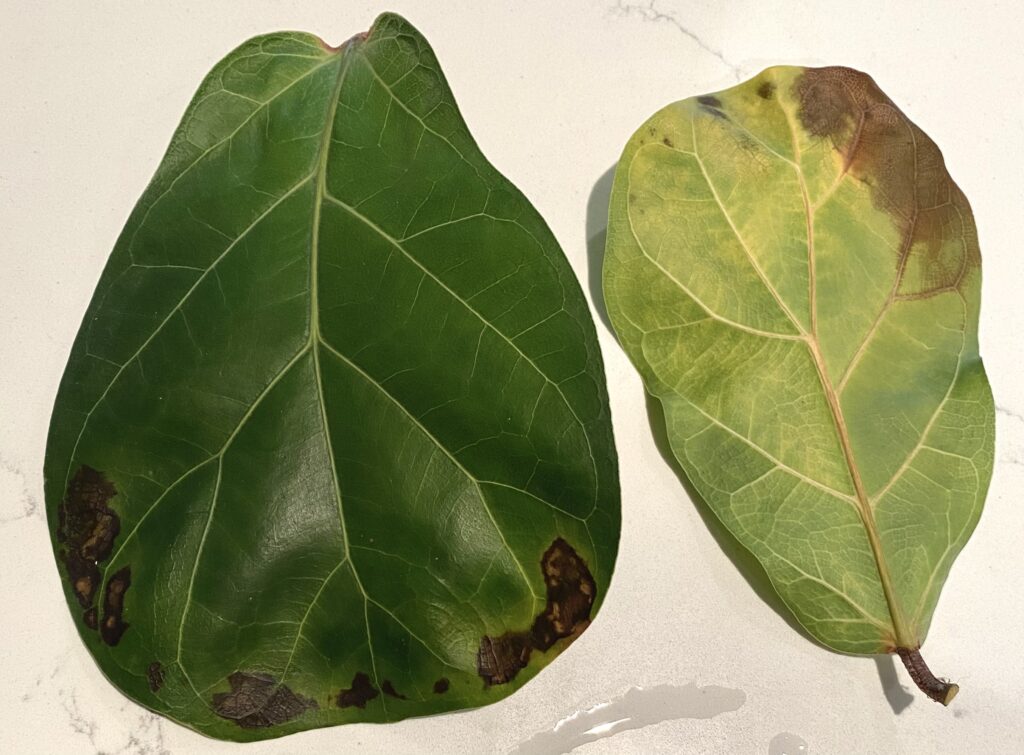
Dark markings (likely black or purple) can also be a sign of overwatering, bacterial infection or cold temperature damage. If the soil is quite wet, its likely from overwatering. If the temperature is below 10 degrees celsius, then it could be from cold temperature. Another sign is if its too humid or the soil is too moist then it could be a bacterial or fungal infection. You can remove the affected leaves if you believe its infected.
Cold Temperatures
Damage from cold temperatures can lead to disease vulnerability, visible discolouration, growth stagnation or death. You can prevent this by making sure your plant is not exposed to environments below the recommended temperature.
Temperature Fluctuations
This plant prefers stable temperatures and is sensitive to cold drafts. Damage from cold temperatures can lead to vulnerability to disease, visible discolouration, growth stagnation or death. You can prevent this by making sure your plant is not exposed to environments below the recommended temperatures.
Yellowing Leaves
If you have a new leaf coming in, your plant is likely fine. Plants pull energy from older leaves to support new growth. But it can also indicate over- or under- watering or lighting issues.
Drooping Leaves
Your plant is likely thirsty. Just give it a little water and it should be as good as new. If all of the leaves are drooping, it could be sad from repotting or it is dealing with watering issues.
Improper Lighting
Incorrect lighting can lead to small leaves. This happens if the plant doesn’t get enough sun or if its winter and you have less sunlight. If its seasonal, then this will likely sort itself out when the days start to get longer.
☢️ Are Fiddle Leaf Fig Toxic?
Fiddle Leaf Fig is toxic to humans and pets if ingested.
Fiddle Leaf Fig Quick Care Guide
| Scientific Name | Ficus Lyrata |
| Nickname | Fiddle Leaf Fig |
| Origins | Western Africa |
| Light | Bright, indirect |
| Temperature | 18-30 degrees celsius (preferred) |
| Humidity | Average humidity (40-60%) |
| Height | Up to 6 feet indoors and about 10 ft outdoors |
| Blooms | Indoors (rarely) |
| Propagate | Stem cuttings |
| Water Frequency | When mostly dry (likely every two weeks) |
| Pests | Spider Mites, Mealy Bugs, Fungus Gnats, Thrips, Scale |
| Common Problems | Overwatering (root rot), underwatering, fungal disease, cold temperatures, leaf drop, discoloured leaves, crispy leaves |
| Toxicity | Toxic (not safe when ingested) |
References
Below is a list of external sources I consulted while writing this post. This post is a mixture of my own experiences, and the external sources listed below:
https://jomostudio.com/products/fiddle-leaf-fig-column?_pos=1&_sid=61dc3c89b&_ss=r (this is also where I bought my plant)
https://www.sciencedirect.com/topics/agricultural-and-biological-sciences/moraceae
https://www.thesill.com/blog/how-to-care-for-a-fiddle-leaf-fig
https://www.thespruce.com/how-to-propagate-fiddle-leaf-fig-7375073
https://fiddleleaffigplant.com/the-ultimate-guide-to-fiddle-leaf-fig-insect-problems-video/
https://www.ourhouseplants.com/guides/fiddle-leaf-fig-problems-and-issues

